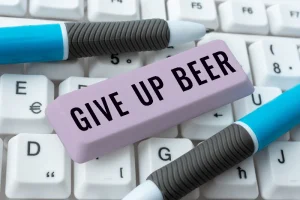
Leveraging sport for substance use prevention: reviewing the evidence at the Commission on Narcotic Drugs

It’s produced by the cells in your kidneys to regulate the production of red blood cells in your bone marrow, so increased red blood cells carry more oxygen in your blood, reducing fatigue and increasing endurance. Anabolic steroids are seen as the big name in performance but there is doubt forming on whether they actually make such a notable difference on records. A paper in the Journal of Human Sport and Exercise gathered all sporting records (including Olympic and world records) of male and female athletes across 26 sports, between 1886 and 2012, and drew comparisons between the pre-1932 records when steroids first became available and post. They found that the times, distances and other results did not improve as expected in the doping era. “The average life-time-best records for ‘doped’ top athletes did not differ significantly from those considered not to have doped. Even assuming that not all cases of doping were discovered during this time, the practice of doping did not improve sporting results as commonly believed,” explains Dr Aaron Herman, the lead author of the paper.
NCAA Division I removes cannabinoids from banned drug class for championships, postseason football
- The use of anabolic steroids by professional athletes across multiple sports has been extensively covered in the media for decades.
- This section of the chapter will address those strategies that have been well-studied and have the strongest empirical support.
- The company also said a year’s worth of therapy would cost $32,000 — higher than the $26,500 price of a year’s worth of Leqembi.
- In 1998, police found a large number of prohibited substances, including ampoules of erythropoietin, in a raid during the Tour de France.25,26 The scandal led to a major reappraisal of the role of public authorities in anti-doping affairs.
- Climbing, boxing, mixed martial arts, rugby, AFL, NFL, cricket, horse riding and many other sports can cause significant physical harms and sometimes result in death.
And it speaks to the culture of sports, with athletes looking for an edge because fame and a disproportionate financial reward go to the winner. Tygart cited a 2017 USADA survey when asked what percentage of athletes likely are cheating. Less than 10% of more than 800 athletes polled said they would feel tempted to use PEDs even if their financial well being https://ecosoberhouse.com/article/drug-use-in-sports-risks-you-have-to-know/ was threatened, and only 5% said they would feel tempted to use PEDs if most of their teammates and competitors were using them, according to USADA. The questions are being asked again 15 years after federal agents raided the Bay Area Laboratory Co-operative (BALCO) and triggered a steroids scandal that ensnared the likes of Barry Bonds and Marion Jones.
People who view this page may also like:

The first step could be as simple as an online forum for comments, criticisms and suggestions that are coordinated independently and presented to WADA. The present situation appears to be that if you are critical, you are not invited to join the discussion. Even media investigations have been attacked; witness the response from Sebastian Coe after blood doping revelations. It is unlikely that we are close to catching the real number of dopers, and there remain calls for more investigations. So amid all the grandstanding, its effectiveness has been called into question, alongside its politics. After all, the IOC was a close partner in WADA’s formation and provides half its funding.
- The estimates for the prevalence of dopers and doping in this study do not equal Anti-Doping Rule Violations as stipulated by the World Anti-Doping Agency.
- The Tour de France scandal highlighted the need for an independent, nonjudicial international agency that would set unified standards for anti-doping work and coordinate the efforts of sports organizations and public authorities.
- Experts at the event concluded that sport can present an opportunity to model healthy lifestyles for youth, increase prevention potential from risky behaviours including substance use, and develop important life skills such as critical thinking and resisting negative peer pressure.
- There are five classes of banned drugs, the most common of which are stimulants and hormones.
Treatment of affected athletes, including counseling and psychiatric support
For example, in one study, Martens and colleagues (2010) found that a personalized feedback-only intervention was effective among a sample of college athletes at reducing peak blood alcohol concentration. Another study by Doumas et al. (2010) found that a feedback-only intervention was effective among high-risk drinkers at reducing average weekly drinking, drinking to intoxication, and peak number of drinks consumed on a single occasion. Finally, a recent study by Cimini et al. (2015) provided similar support for the efficacy of a single-session in-person motivational enhancement intervention. Together, these findings suggest that brief, motivational enhancement interventions have considerable potential in reducing harmful alcohol consumption among athletes.

Reminding your children of the negative legal and athletic-career consequences of PEDs may be an effective way to discourage their use. The use of anabolic steroids by professional athletes across multiple sports has been extensively covered in the media for decades. Despite the negative consequences imposed on those who get caught, impressionable teenagers may look negative effects of drugs in sport to these star athletes and internalize the belief that taking steroids is the key to athletic superstardom. Parents can use media coverage of doping athletes as a teaching tool to discuss the professional repercussions of getting caught. For Artistic and CGS sports, the “honest yes” estimation did not differ significantly from the overall category (Fig. 6).
RRT Questions on Prohibited Performance-Enhancing Drugs

The search generated 963 records, that were relevant for further screening procedure. Hereafter duplicates were excluded and so were studies that did not measure prevalence, studies that were not primary, studies that did not concern recreational sport, and studies that did not examine doping or performance-enhancing drugs. However, these either concerned a specific country [9], a limited age scope [10] or focused on methodological comparisons [11]. We therefore believe the present study is the first to survey the use of doping and performance-enhancing drugs in recreational sports in a larger multi-national region.
The enhanced games
After all, the war on all drugs was recently declared a failure by the United Nations and they’re now exploring alternative ways to address this growing problem. If governments with a wealth of resources can’t control recreational drugs, it stands to reason that sports regulation bodies will have an equally tough time. There’s no telling how many sporting champions harbor a dirty little secret, but ask them how they got away with and their answer will indicate how they’ll continue in the future. “I had to use my whizzer, which was a fake penis where you put in someone’s clean urine to pass your drug test,” said Mike Tyson about his old-school point-and-shoot method of deception.
- While Bach represents pessimism about the anti-doping effort, Tygart said he can imagine a day when doping and the use of performance-enhancing drugs have been eradicated from sports.
- Researchers in the Gundersen Lutheran Medical Journal told runners they were being given super-oxygenated water, which was in truth given plain ol’ H20 – and they ran 8% faster.
- “Working” a 12-step program involves a series of steps, which include behaviors such as admitting that one is powerless over addiction (Step 1), asking God or a higher power to remove shortcomings (Step 7), and carrying the 12-step message to other alcoholics/addicts (Step 12).
- In a sporting world in which inequality of opportunity is already rampant, the removal of the doping ban would only deepen an existing moral failing.
- Most of the available literature primarily looks at substance use in adolescent and college athletes with more emphasis on alcohol predominately and is limited in relation to treatment modalities.
Also explain the consequences of drug use, such as a suspension which could lead to a scholarship loss. Make sure athletes understand all the social, physical and mental consequences of steroid abuse. Finally, tell them the signs to look out for so they can help a friend who may be struggling with steroid abuse and spread their knowledge to others. Educate your children or peers about the harmful side effects of both short-term and long-term steroid abuse. Also, explain that doping is cheating, and let athletes know that you expect them not to use drugs.
Copyright © 2025 Hathazarinews.com. All rights reserved.